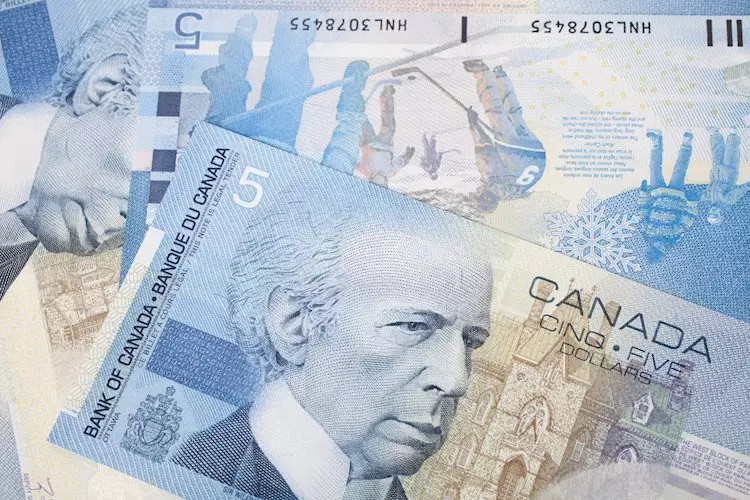As of Thursday, November 21, the US Dollar (USD) Index remains entrenched in a phase of consolidation, hovering around the 106.50 mark after a positive close on the previous day. This relative stability hints at a cautious but steady economic sentiment within the markets. Economic data released today will be pivotal in shaping perceptions surrounding the USD, including Initial Jobless Claims and Existing Home Sales figures for October. Moreover, regional manufacturing surveys from the Federal Reserve Bank of Philadelphia and the Kansas City Fed are also slated for release, adding layers of complexity to the economic narrative.
The current week has seen varied performance of the USD against key foreign currencies, with the USD emerging as the strongest performer relative to the Japanese Yen (JPY). This dynamic reflects a broader trend captured within the percentage change heat map showcasing the relative strength of major currencies against each other. For instance, the data point between USD and JPY indicates the performance of the dollar against the yen, reinforcing an ongoing narrative of the dollar’s resilience amid global market fluctuations.
Market sentiment remains cautious, accentuated by a modest increase in US Treasury bond yields. Currently, the benchmark 10-year US Treasury yield stabilizes around 4.4%, indicative of investor caution, and stock index futures are showing mixed signals. With macroeconomic data slated for release today, analysts are particularly keen on the reactions and comments from Federal Reserve policymakers which could significantly influence future market directions. Notably, comments from Cleveland Fed President Beth Hammack, Chicago Fed President Austan Goolsbee, and Kansas City Fed President Jeffrey Schmid are anticipated to provide critical insights during the American trading hours.
The Impact of the Bank of Japan’s Policy
In parallel, the Bank of Japan’s strategy continues to draw attention. Governor Kazuo Ueda emphasized that monetary policy decisions are made with a keen eye on exchange rate movements. He indicated that these fluctuations are instrumental in shaping Japan’s economic and inflation outlook. After a notable rise of 0.5% in the USD/JPY exchange rate on Wednesday, the pair is currently grappling with bearish momentum and is trading below the crucial threshold of 155.00, indicating potential volatility in the coming days.
The EUR/USD pair finds itself in a similar predicament, trading around the 1.0550 mark after a downbeat closure on Wednesday. Market participants are eager for the forthcoming Consumer Confidence data from the European Commission, which may provide essential context for Eurozone economic stability.
Commodity Prices and Economical Signals
In commodities, gold has exhibited a strong performance recently, marking its third consecutive day of gains with the XAU/USD pair trading slightly above $2,660. This uptick in gold prices may signal a flight to safety by investors amid fluctuating equity markets and economic uncertainty. Concurrently, the USD/CAD pair has found modest stability after a turbulent start to the week, oscillating in a narrow range above the 1.3950 mark. Investors await the release of New Housing Price Index data from Statistics Canada, which may further guide fluctuations in this currency pair.
Interestingly, despite strong inflation readings from the UK, the GBP/USD pair has failed to capitalize, showing small losses on Wednesday and maintaining a relatively subdued trading range near the 1.2650 mark. This underscores a broader theme within the financial markets, where positive economic data does not always translate into currency strength, reflecting a complex interplay of factors at play.
At the heart of the USD’s strength is the Federal Reserve’s dual mandate: ensuring price stability and promoting full employment. Adjustments to interest rates emerge as the primary tool in this endeavor. When inflation rates exceed the Fed’s target of 2%, the Federal Reserve typically responds by raising interest rates, making the US economy a more attractive investment destination. Conversely, in situations of low inflation or high unemployment, lowering interest rates can lead to currency depreciation.
The Federal Open Market Committee (FOMC) plays a crucial role in this process, meeting regularly to assess economic conditions. Comprising twelve Fed officials, including governors and regional presidents, the FOMC’s decisions carry significant implications for the USD’s trajectory. In extraordinary circumstances, the Fed may resort to Quantitative Easing (QE) or Quantitative Tightening (QT) to manage liquidity in the markets. QE aims to stimulate economic growth by injecting liquidity into the financial system, while QT does the opposite, often resulting in currency strengthening.
As economic indicators unfold throughout the day, market participants remain vigilant, analyzing both macroeconomic data and Federal Reserve communications to gauge the future trajectory of the US Dollar and its impact on global financial markets.


Leave a Reply